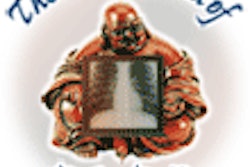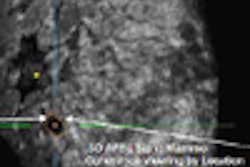Looking for a way to deal with dose creep resulting from your digital x-ray systems? If you have a PACS, the solution to the problem might be as close as your data archive.
At least, that's what a group from the University of Washington in Seattle found. They implemented a software application that mines data from their PACS archive to help monitor radiation dose delivered by their computed radiography (CR) systems. The group was able to cut radiation dose nearly in half for some applications, according to research published in the July issue of the American Journal of Roentgenology (Vol. 189:1, pp. 7-11).
The university's Harborview Medical Center has had CR installed since the early 1990s, and was grappling with dose creep, which occurs when radiation dose delivered to patients gradually rises in the time following digital x-ray implementation. A number of explanations have been proffered to explain the phenomenon, but it's generally believed to result from the wider exposure latitude of CR, as well as the difficulty in tracking radiation dose.
The group focused its attention on extracting S-number information from the DICOM headers of images produced on the facility's CR machines, all of which were manufactured by Fuji Medical Systems USA of Stamford, CT. S-number is Fuji's index for measuring relative exposure intensity, and can be a general -- albeit imperfect -- indicator of proper CR exposure technique and radiation dose, the group stated.
With the assistance of Harborview's PACS vendor (GE Healthcare, Chalfont St. Giles, U.K.), the facility implemented a data-mining program that extracts the S-number information from the "sensitivity" DICOM tag on images. Because this DICOM tag isn't stored in the PACS database, it has to be extracted by the data-mining application, the group noted.
The mining program also extracts other information important for tracking CR dose over time for different procedures and at different CR quality assurance (QA) workstations. This enabled the group to track S-numbers over time and cross-index S-numbers to different types of anatomical procedures, as well as to the workstations that might be used by different radiologic technologists.
Putting the data to work
Once the data are collected, Harborview uses it as part of an ongoing effort to monitor S-numbers and drive down radiation dose. The group has developed an S-number dashboard that compares current S-numbers for different CR exams to both the previous month's statistics, and also to baseline levels that were set at the start of the data-mining program within each radiographic section at Harborview.
The dashboard also compares S-numbers by exam to what the facility has determined should be the target radiation dose for that procedure, and flags procedures that fall outside the facility's parameters for overexposure (S-number of less than 50, resulting in possibly excess patient dose) or underexposure (S-number in excess of 800, resulting in quantum mottle interfering with diagnosis).
Monthly QA meetings are held within each radiographic section to review the dashboard information, and technologists who have a high number of red-flagged exams are alerted to the errors by their supervisors, the authors noted. Harborview also copies and posts the dashboard information at locations throughout the radiology department, such as at x-ray equipment consoles and CR QA workstations.
Study Summary
|
||||||||||||||||||||||
What impact has the data-mining project had on radiation dose at Harborview? The group reports that mean S-numbers have increased across a number of locations where CR is used (see Study Summary table at right). The figures correspond to an approximate reduction in dose delivered to CR imaging plates of 32.2% to 45.5%.
Harborview has taken its data-collection program to the next step by adjusting the phototiming systems on its CR equipment to match the facility's S-number goals. To this end, the hospital has purchased an electronic cassette (Radchex, Fluke Biomedical, Everett, WA) that can survey and adjust the S-number calibration of all the site's CR readers. This will allow Harborview to work with Fuji in the future to properly adjust its CR phototiming systems to reflect its S-number goals for specific anatomy.
The authors concluded their study by stating that their project has succeeded in its primary goal of arresting dose creep and bringing S-numbers back to within targeted goals. The project has also produced other benefits, such as smoothing out variances in the way that CR images appear to radiologists reading on PACS workstations.
"This project has promoted a culture change in the way technologists manually perform CR," the authors stated. "This cyclic QA improvement process shows that PACS data can be mined usefully to assist in reducing patient radiation dose and interexamination dose variance."
By Brian Casey
AuntMinnie.com staff writer
July 30, 2007
Related Reading
DICOM-compliant displays aid CR/DR exposure control, July 17, 2007
CR/DR image quality: Issues and concerns, April 12, 2007
Strategies for reducing 'dose creep' in digital x-ray, April 11, 2007
Study suggests ways to cut CR radiation, March 5, 2007
Study: DR delivers lower radiation dose, November 7, 2006
Copyright © 2007 AuntMinnie.com



















